Tis’ the season to get your marketing campaigns ready for online holiday shopping. Given the ongoing pandemic, you might have concerns about competing online. With more brick-and-mortar stores closed and social distancing in place, successful businesses need a strong online presence.
But how do you create a festive online experience customers can’t resist? How do you thrive, and not just survive, online?
From interactive holiday contents to festive social media giveaways, here are the best marketing techniques to distinguish you from the competition.
This article includes:
- Start Your Campaigns Early
- Create User-Generated Content Campaigns (Photo Contests, Video Contests)
- Make an Emotional Appeal
- Start a Discussion
- Offer Free Stuff
- Create Interactive Marketing Campaigns (Personality Quizzes, Brackets)
- Have a Webroom to Showcase Your Products (Influencers, Instagram)
- Create High Engagement Lead Generation (Sweepstakes, Newsletters, Emails)
- Make Better, More Targeted Ads
- Increase Conversions (AI, Bots, Machine Learning)
- Use SEO Techniques to Rank Higher in Searches (Keywords, Hashtags)
- Optimize Customer Experiences
- Show Your Appreciation by Thanking Customers
- Retarget Your Existing Customers
- Market Your Brand (Niches, SWOT Analysis)

Image credit: Free-Images
1. Start Your Campaigns Early
The early bird gets the worm, right? Hence, waiting until late November or early December to run holiday ads is too late. Consumers start shopping in late October and early November. Hence, you should create your campaigns in August, September, or early October.
Change your site or landing page background and colors to introduce the fall season. Then, share Christmas-related ads, challenges, giveaways and upcoming promotions. Your late summer/early fall campaigns don’t have to include Christmas themes per se but show seasonal offers before December. Get the holiday buzz going. It puts you top of mind with customers. Fa, la, la, la…yup!

2. Create User-Generated Content Campaigns
“Never stop testing and your advertising will never stop improving,” David Ogilvy
You’ve probably seen User Generated Content (UGC) in action. Starbucks ran a white cup promotion that let customers decorate their own cups. Airbnb encourages guests to post images of their vacation home travel experiences.
UGC campaigns can help you maximize engagement with customers over the holidays. You can turn customers into influencers and brand advocates by letting them show off your products in photos, videos and posts. And, there are all kinds of fun ways to spark their interest.
When exploring UGC, a study found that:
- About 90% of customers say it’s part of their purchasing decision.
- It’s so influential, it makes up 87% of search engine results.
- Nearly 73% of consumers say it boosts their shopping confidence.
- Around 61% of consumers say the techniques help them engage with brands.

Before You Start Your Campaign
To get started, select the most relevant channel. Maybe it’s Instagram, Facebook, YouTube, and/or Twitter. Next, decide if you want users to share GIFs, videos, or pictures. Create a campaign and pause to consider your goals. Are you looking to boost holiday engagement? Create more brand awareness?
Each goal will have a different impact on your business, and might be more or less usefull depending on your priorities.
With your campaign outlined, create entry instructions for your audience:
- Include submission deadlines, any rules, and a unique hashtag(s) to use.
- Inform your audience whether they can enter by direct upload form or a #hashtag entry.
- Decide if you will manually moderate/accept submissions.
- Provide any image or video requirements.
When you receive entries, display them in a curated collection that matches your brand. Once you post the images or video, collect votes by asking for the best submissions (This increases engagement).
A few examples of effective UGC campaigns include:

Image Credit: Printernet
3. Make an Emotional Appeal
“It takes months to find a customer, seconds to lose one”, Vince Lombardi
The holidays are nostalgic times for some, chores for others. Knowing these different emotions can help you target customers in your ad campaigns. Because emotion can drive customers to make purchases, carefully craft your ads to appeal to specific buyers.
Other ways to reach customers with an emotional appeal include behind-the-scenes ads that show your brand. Or, share an image of your business supporting your local community.
A few facts about buyers include:
9% of Customers Hate Shopping
These customers don’t like pushy sales tactics or ads with too many CTAs. Include links in ads to guide them and gently prompt them with chatbots and interactive assistants. They’re traditionalists who may not like change but you can nudge them gradually.
17% of Customers Face Decision Making Anxiety
They may debate over two or more products or services. They may make returns and regret initial purchases. Live support can help them finalize their purchases.
12% of Customers Need to Feel Superior
They want the best product or service they can find. Price points aren’t factors. In ads, display how the product makes them exclusive (think Apple ads). Let ads emphasize lifestyle images and not tech specifications.
11% of Customers Need to Know Everything
Information drives these customers more so than the product or service. Give them tech specs and link them to your blog and industry publications.
20% of Customers Needs Valuation
They shop based on opinions, reviews and feedback. To reach them, include user reviews and videos with conversations about products or services.
10% of Customers are See It. Buy It. Done.
They get frustrated with wasted time. They don’t want delays. Ensure your pages load fast across mobile. Provide them with self-serve options and a 24/7 knowledge center or instant access to chatbots for any questions.
15% of Customers Want to Feel Special
They like free perks and gift offers. These are early adopters and influencers. Personalize their service with exclusive deals and give them free products or samples often.
9% of Customers Want to Have Fun
These customers enjoy shopping and want you to entertain them. They’re socially engaged. Keep ads light, fun and interactive. Use a mix of video and text to pique their interests.

Image Credit: Free-Images
4. Start a Discussion
“Good marketing makes the company look smart. Great marketing makes the customer feel smart,” Joe Chernov
There are multiple ways to engage customers over the holidays. From your social media to your blog and contests, you can help customers start a dialog and communicate with others. One of the best techniques for this is with Instagram and Facebook ads.
Let’s say you have an online stationery business. Create a sample post like “Will you send an e-card for the holiday or a print card?” At the end ask your audience something like “What are your thoughts? Is a paper card or e-card better?”
As another example, you can create a review about a product. Take pop-up Christmas trees. Write a comparison blog about the 10 Best Pop-Up Trees. At the end ask users which they prefer or plan to purchase. Have your team reply to comments or use automated conversational chatbots.
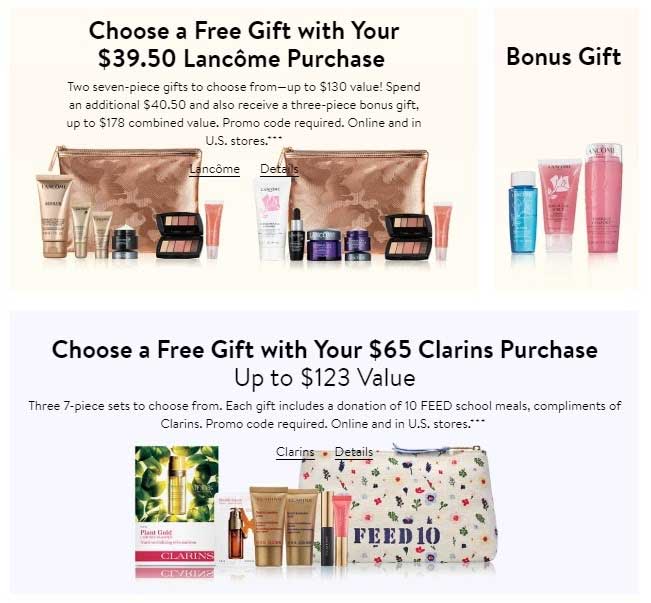
Image Credit: Nordstrom
5. Offer Free Stuff
Customers love finding deals around the holidays that include free perks. They might make a purchase for someone else but keep the free gift. Or, they’ll make a purchase because it gives them money back or points toward a future purchase. Use this strategy when creating your ad campaigns and sales. It can motivate shoppers to spend more with you.
Home Depot offers free shipping on orders over $45 while customers only need to spend $35 with Walmart. To encourage their shoppers, Nordstrom includes a free cosmetic gift with a $39.50 purchase or a different gift with a $65 purchase. Giving customers a choice empowers them and boosts their confidence with online shopping.
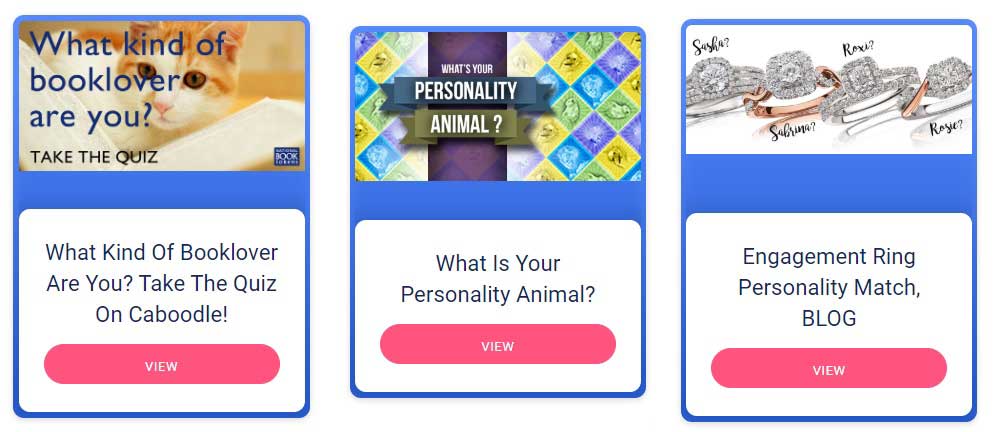
6. Create Interactive Marketing Campaigns
“Remember…No matter how good your feedback is you start over with the next customer”, Shep Hyken
Interactive campaigns are great ways to boost holiday cheer. You can engage customers with an event-based marketing effort. This might include a survey, video, infographic, contest or quiz. In the spring, the NCAA website is abuzz with fans who want to fill out online brackets to predict the Final Four. In the fall, before the NFL season, fans line up for Fantasy Football to make their picks. But, how do you decide which method to use?
Here are a few points to help you get started:
- Determine the goals for your campaign and the audience you want to reach.
- Set a budget and factor in the ROI that you would like from the campaign.
- Select the channel you want to use for your campaign.
- Explore your triggers. This is the marketing content that results in customer action. You can find this from data like customer reviews, feedback and data analysis.
- Create responses or action from customer actions. This is the behavior customers take that can lead to a sale.
- Use tools that can help you tell a story to engage customers. For example, a bank site might have online calculators to help potential buyers with mortgage questions. Once they use the calculators, the business can then send an email that helps them eventually find a home.
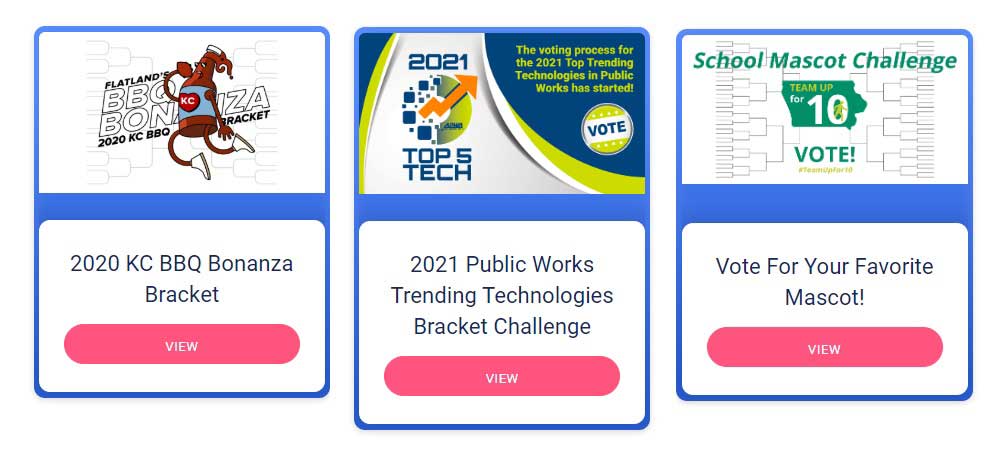
Interactive experiences can help you convert customers. Look for ways to offer personalized marketing techniques based on your audience. Not every quiz or bracket will lead to a sale. However, you’re including fun marketing features on your site that keep your brand on the mind of shoppers over the holidays.
Take a look at these fun quizzes and brackets that increase engagement.
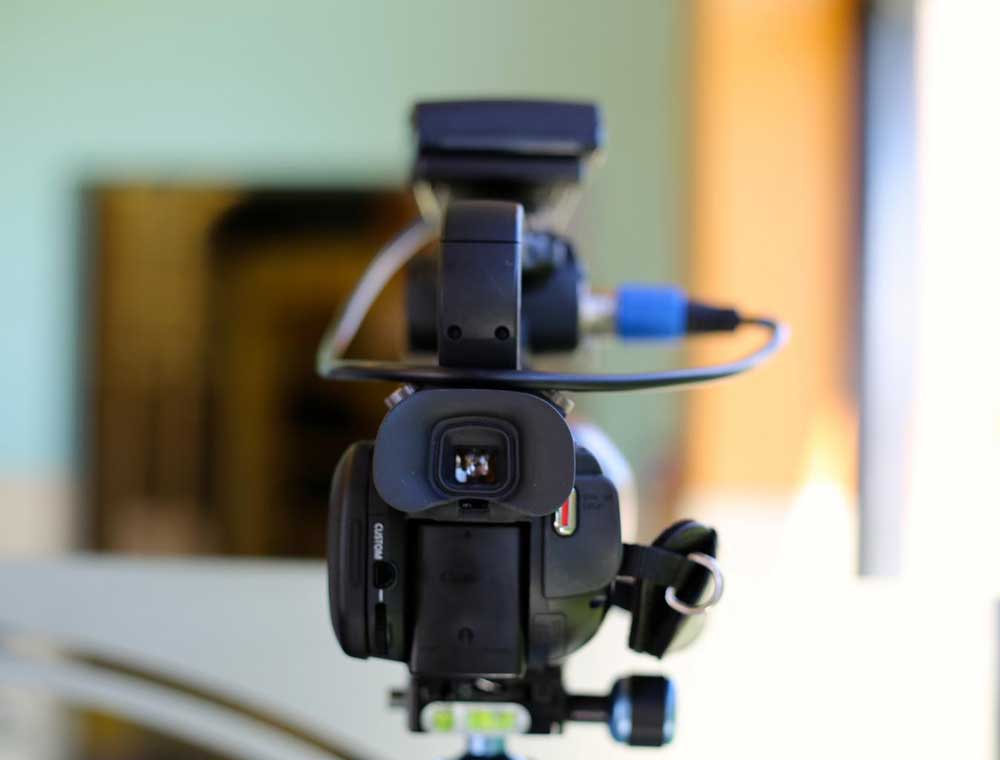
Image Credit: Free-Images
7. Use Webrooms, Video Campaigns and Influencers
A great online tactic is to create a webroom. It’s similar to a showroom and lets customers explore your product from different angles. This is a feature used with real estate home tours, hotels and vacation rentals. The immersive experience can help shoppers with purchasing decisions.
Titleist lets golfers demo new golf clubs before purchasing them. But, they don’t stop there. Golfers can visit their YouTube channel and watch reviews on new drivers or see the Titleist T-Series irons in-depth.
Working with Influencers
Another technique Titleist takes advantage of is using influencers in their videos. Michael Breed, featured in their videos, is a popular golf teacher who provides golfing instructions, tutorials and demonstrations. When you create a tutorial, send email blasts to promote it. Customers love taking part in tutorials or live demonstrations. With classes, offer a free in-person trial (with social distancing in mind).
Instagram has around 1 billion Instagram users and nearly 71% of businesses use it to reach target audiences. If you’re Gen-X or a baby boomer, you may prefer Facebook. However, Instagram is a more impactful channel. Instagram gets an average influence rate of 1.6% while Facebook only gets a 0.09% engagement rate.
When selecting influencers, refer to Instagram and look for influencers based on their following and audience. To find influencers, try a DIY approach, work with an agency or use an app and enter keywords.
Further, with Instagram:
- 31% of users earn over $75K a year.
- 32% of people earn $50-74K a year.
- 32% earn $30-49K a year.
- 70% shop for products on the app.
- 80% follow one specific brand.
Video Marketing
Video marketing can help you showcase your brand. It lets you showcase your brand and impress your customers. Include videos in social media campaigns, emails and on your site. With more shoppers on phones and tablets, leveraging this technology can help you reach a wider audience.
Work with photographers, videographers and developers who specialize in these techniques. And, select a few products to showcase over the holidays. This is sometimes a time-consuming process and you want your webroom up-and-running for the holiday rush.
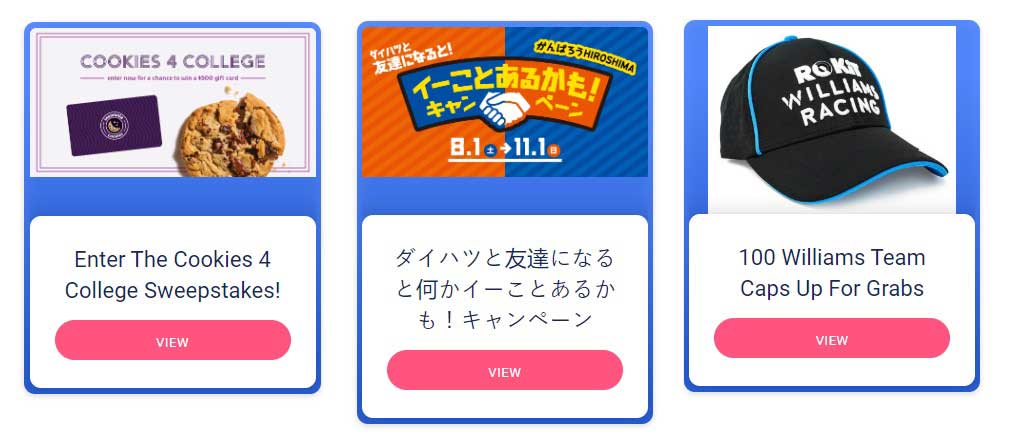
8. Create High Engagement Lead Generation
Lead generation is a way to find new customers or leads. They can come to your site organically because they saw an ad or you can create ads that draw them to your business. The goal is to convert them into customers. Hence, they need an incentive that keeps them on your pages.
Because this represents potential customers, you have the chance to increase sales based on their interactions on your site. Your content can create engagement and as they fill out a sweepstakes entry or giveaway, you can email them with other offers. Deciding when to use an offer like this takes time. Mix up your campaigns throughout the year and have something every quarter/season. This gives customers something to look forward to and it refreshes your pages.
A popular contest is a Hole-in-One giveaway. While it takes place on a golf course, it starts online. Customers fill out entry forms and can read news about previous winners. Your goal is to collect emails and then follow-up with leads. If you don’t have a sales and marketing team in place to nurture leads, consider using AI and machine learning (see No.16 below).
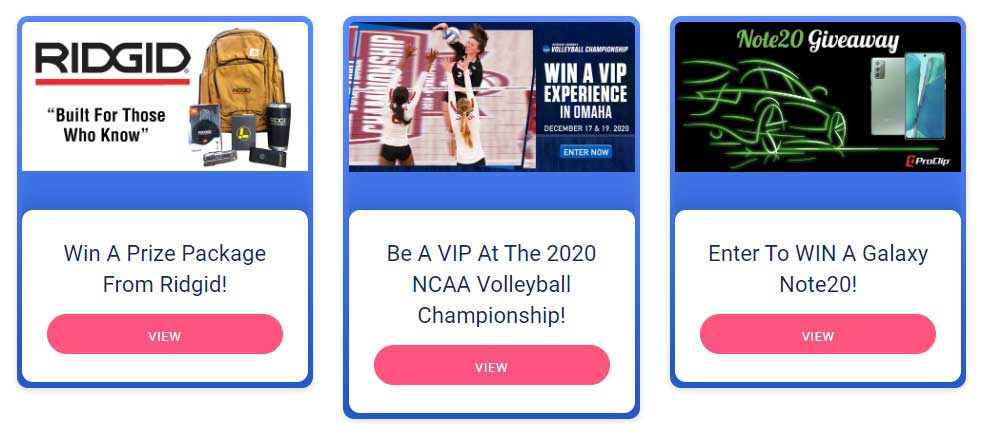
Lead generation campaigns can make you top of mind with potential customers. Consider your brand when creating campaigns for these niche and targeted markets. You don’t have to create holiday themes for these campaigns. Creating buzz is what matters. For example, the NCAA tournament isn’t until March. But, a sweepstake or giveaway over the holidays is a BIG incentive for basketball fans awaiting the upcoming tournament.
Take a look at these instant win contests, sweepstakes and giveaways.

Image Credit: Free-Images
9. Make Better, More Targeted Ads
“Make it simple. Make it memorable. Make it inviting to look at. Make it fun to read,” Leo Burnett
Let’s say you’re selling eyewear online. A mistake some businesses make is their ads immediately speak about the business. Or, they show multiple pairs of glasses side-by-side or they use unclear images. However, to optimize your ads, a better technique is to show someone wearing the glasses. And, use images that are flirty, sexy, sporty or fun. Showcasing the product this way lets shoppers visualize how they might look.
Competitor Targeting
Another way to develop better ads is to see what your competitors’ ads look like. It’s also helpful to review the keywords they’re using. A few apps can let you view competitor ads and their keywords. This technique is also called competitor targeting with adwords.
These include sites like:
- Campaign Watch: This lets you view competitor marketing strategies. You can also track their rankings, landing pages, visibility in search results.
- iSpionage: It lets you see all the ads, landing pages and ad duration a competitor has.
- Search Monitor: It scraps ads online to find the best competitor ads. It also gives insights and other data you might need like SEO, PPC benchmarks and SERP.
- Semrush: This helps you optimize and analyze competitor keywords. It also includes custom reporting, content analysis, and site audits.
- SimilarWeb: Analyze competitor ads and view their backlinks. It includes a free trial to get started.
- Spyfu: This lets you fetch competitor keywords and find specific niches like how they rank organically.
- WordTracker: This gives helpful keyword information for sites like YouTube and Amazon. You can scrap, fetch and filter competitor keywords.
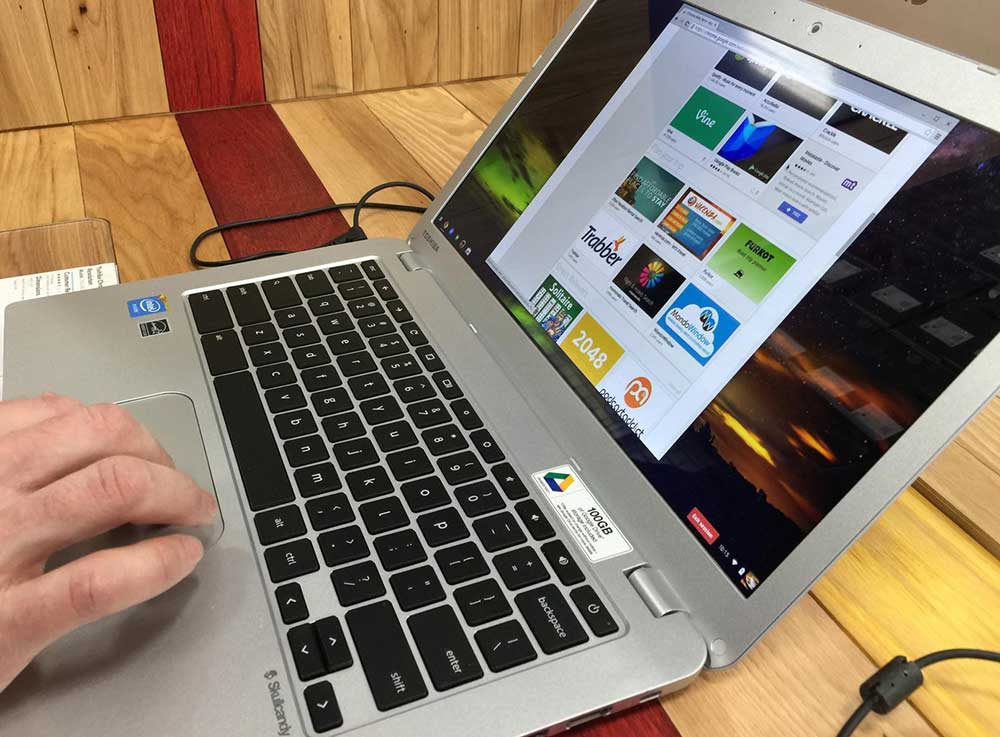
Credit Image: Free-Images
10. Increase Conversions
“If you want to increase your success rate, double your failure rate”, Thomas J. Watson
When you think about conversion rates, the goal isn’t just to click. Identify why you want your customers to click on an image. Do you want them to sign up for a newsletter and give you their email address? Are you interested in sharing a promotion offer with them or a new book excerpt?
The objective behind the action can help you reach a wider audience (and not just numbers). This matters because if you only look at conversion rates, you’ll find disappointment when your bounce rate increases and sales are non-existent.
To increase your conversion rates:
- Add pop-ups to your home page for a newsletter, book excerpt or free trial.
- Include reviews and testimonials on your site.
- Update your logos and use clean, fresh images that show action.
- Add a live chat or chatbot feature to your site.
- Include a free trial or money-back guarantee (which is helpful for holiday orders).
- Make a strong CTA at the end of a blog article. Keep the article’s focus on solving a problem (you’ll get more organic traffic if you’re not salesy).
- Eliminate extra clicks. Don’t say, “Go to this page”. Insert a backlink. Remember, customers are on devices (and typing with fingers!). Make it easy for them.
- Do A/B testing to evaluate your campaigns. Set up a sales funnel and track each campaign.
- Create a value proposition on why customers need your product for the holiday. A kitchen widget that dices and slices can save time chopping ingredients.
- With your blog and ads, make them solve a problem. If you’re selling welcome mats, stress how much money consumers can save on vacuuming and steam cleaning dirty carpeting. Paying more money, in the long run, is a pain point that makes customers consider a purchase now.

Image Credit: Free-Images
11. Use SEO Techniques to Rank Higher in Searches
It was the best of times. It was the worst of times. It was that long, boring ad no one clicked on. No marketer or business owner ever wants bad ad campaigns or high bounce rates. Using fresh SEO techniques is vital to your holiday sales. Depending on your industry you may face stiff competition from Amazon or eBay. However, giving new life to bland ads can give you an edge.
Successful ads should include:
- Optimized images showing action, bold colors, big wording and clear CTAs. Use multiple images especially with clothing. Show labels and ingredient labels clearly. Note: When customers can see ingredient labels clearly it reduces churn, negative sentiment and returns.
- The use of videos or audio (with sound options) if it enhances the ad.
- Hashtags (Instagram, Twitter) to target shoppers on social media. Tell them about an upcoming promotion or holiday sale. Note: Hashtags aren’t popular on Facebook.
- A particular product or service or a comparison. Don’t show EVERY type of product at once. This confuses shoppers.
- Explain the product or service. Include measurements and care instructions. Note: Another selling point is to include customer questions and comments on the page. This lets customers instantly view answers.
- Short, clear and unique copy (not War and Peace). Note: Change each description to help you rank higher with Google and discerning customers (don’t bore them, keep it fresh!).
- No misspellings, grammatical errors or broken links.
- Wording specific to that audience. Don’t include “lit” for baby boomers but do include “Yaass!” for millennials, Gen-X.
- The ability to integrate across mobile devices (phones, tablets).
- Accessible features for the hearing and/or visually impaired.
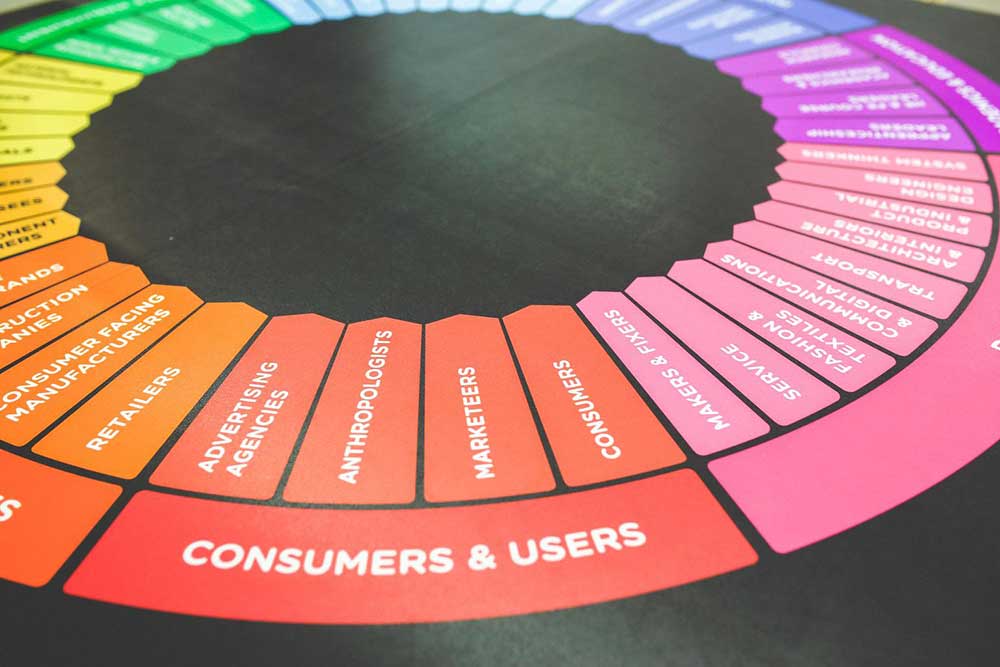
Image credit: Free-Images
12. Optimize Customer Experiences
“The best place to hide a dead body is page two of Google”, Unknown
Around 62% of customers will share their bad experiences with others. Hence, you want to provide customers with the best experience when they shop with you. Finding gaps and mistakes your competitors make or mirroring their success can help your brand.
When Amazon started offering Fresh grocery delivery and free shipping, Walmart quickly followed suit. Once Instacart started using chat so drivers could communicate with customers, other stores followed suit. Target now offers same-day deliveries and personal shoppers with Shipt. And, customers can use text to chat with drivers.
Peapod (which is now under Stop and Shop) took a different approach. With their online grocery store, they connect customers to a separate platform, Savory, their online magazine that includes recipes. Here, users can access thousands of free recipes and rate them for shared experiences. However, a gap is the site doesn’t let users automatically order the ingredients. But, they can on AllRecipes. Find a fish taco recipe and customers can conveniently order the ingredients on the same page.
Concepts like these let you create fun, sharable content for customers. It’s easier for them to engage with your brand and you can cross-sell other products. This is essential for busy moms who want fast meal prep during the holidays (or new ideas on old staples). It’s also beneficial for customers that want to make changes to a delivery order they’ve placed (especially when stores are experiencing out-of-stocks).
To help with optimizing customer experiences, consider:
- How can I make this experience better and more convenient for my customers?
- Is an online ad or video demonstration better for increasing engagement?
- Will this target audience benefit from features like text messaging?
- What areas can I cross-promote other products?
- Should I use an influencer or actor to demonstrate the product or service?
- Why do customers want to make this particular purchase over the holidays?
- Is this product or service more convenient than an existing product?

Image credit: Free-Images
13. Show Your Appreciation by Thanking Customers
Customers want to feel appreciated especially around the holidays which are sometimes stressful times. Create a fun online deal to inspire tired shoppers. Show you care with small gifts and rewards or a loyalty or rewards program. And, show nostalgic or fun holiday images in your ads.
Stop and Shop uses a point system to give dollar savings to its customers. Shutterfly uses coupon codes for discounted savings. They both include holiday-themed images (snowmen, reindeer, decorative pine cones).
Reply to Customer Responses
Another way to show your appreciation is to respond to customer comments. Hotels on TripAdvisor use this approach when responding to comments – and complaints. It shows transparency and lets potential customers know you’re listening.
With free rewards, incentivize them for customers. Have a free gift with a $100 purchase or free shipping with $35 spent. Or, double the savings with a 2-for-1 deal. This approach is popular on sites like Bath and Body Works.
Reward Customer Loyalty
When it comes to customer loyalty, don’t assume existing customers will stay with you. Give them an incentive by thanking them for their business:
- Send a print or e-card to them with a 10 to 15% off discount.
- Invite them to enjoy exclusive offers and private sales.
- Include a free gift-wrapping service online (and personalized cards).
- Give them free shipping sitewide with no dollar limit.
- Send out exclusive 50% off savings coupons for a limited time or one item.
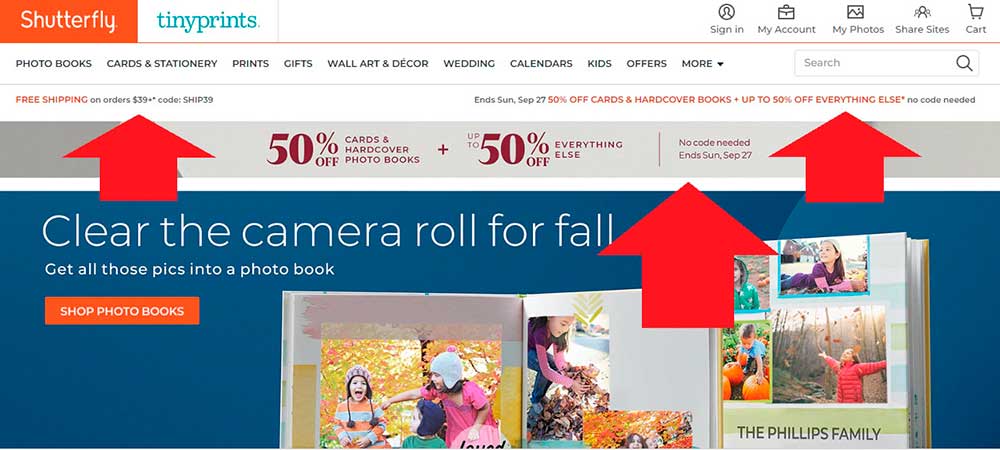
Image Credit: Shutterfly
14. Retarget Your Existing Customers
Increasing conversions for the holiday season is important to every business. However, it’s sometimes challenging with existing customers or potential customers who have expressed interest. To gently push sales, use time-sensitive ads and discounts for this segmented audience. When an ad expires soon it stresses the need to buy-it-now. This is an approach Shutterfly takes.
Shutterfly ads typically expire in a few days. And they run different promotions. They may have a promotion that’s 50% off photo books while another promotion is free shipping on $39+ orders. The incentive for customers is that the site is giving them consistent promotions, offers and deals they can take advantage of (and who doesn’t like savings?). Remarketing this brand is also effective. You can unobtrusively send ads when customers express interest (like around the holidays).
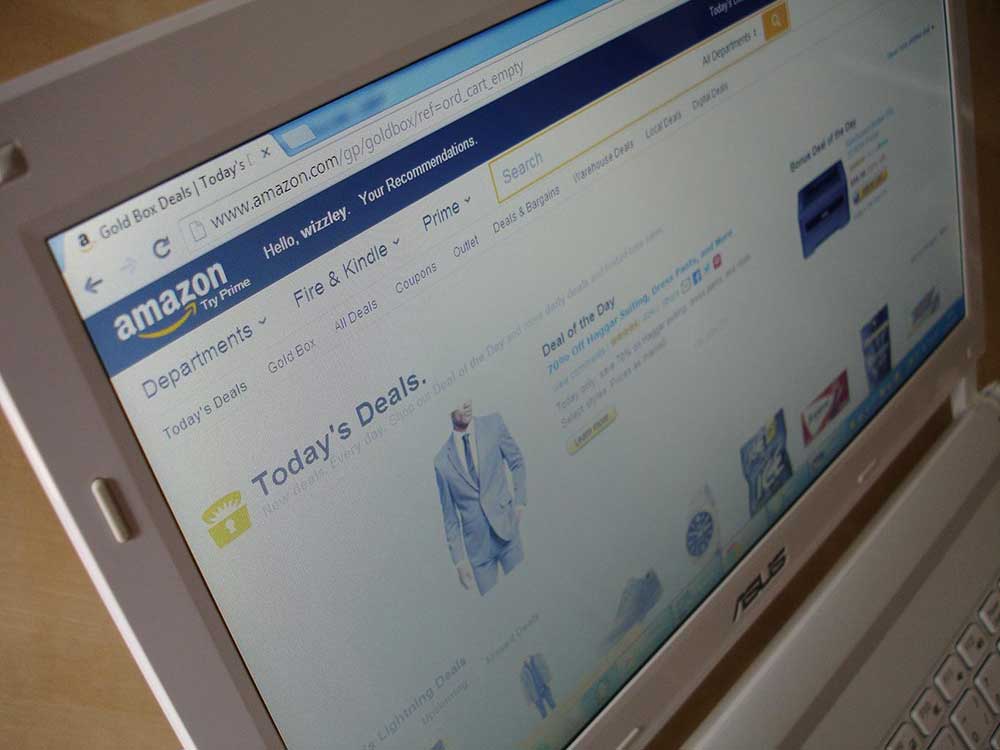
Image Credit: Free-Images
15. Market Your Brand
Marketing your brand around the holidays is important. You want to leave a lasting impression with customers. For example, if your business makes all-natural products to help the environment, include this in your messaging. If you have a t-shirt business and you’re having a Christmas sale, show images of people wearing your tops in a festive mood.
Benchmark Your Business
To help you strengthen your brand, benchmark your business. This is a way to compare your business to other businesses. It’s a strategic and important step, especially around the holidays. You can find out things like which keywords are effective or what price point to use during a sale.
To measure your business with a competitor’s:
- Pick businesses in industries like yours.
- Explore their websites, offers and blog articles. Check where they rank on Google.
- Compare product or service prices to see if you’re in line with them. Only go higher in price if you sell products other sites might not have. Go slightly lower if you want to push sales.
- Shop through competitor sites and look for gaps or mistakes. These might include old images, no free shipping, not integrating across mobile and misspellings.
- Identify areas where they market products or services better.
- Review their social media to see how they’re engaging customers. Are they using ads on social media, offering discount codes or other promotions?
Do a SWOT Analysis
A S.W.O.T. analysis explores the strengths, weaknesses, opportunities and threats with your competitors. It’s a specific way to understand what the competition has and doesn’t have. You can then add on perks they don’t have (like free shipping).
Fill a Void or Find a Niche
Another approach to market your brand might include targeting a specific niche audience. When stores ran out of paper towels, hand sanitizer and toilet paper, some businesses became creative.
Taste of Texas started delivering toilet paper with steaks during the pandemic. The business, around for 42 years, monetized on a market gap to fill customer needs. News about their unique delivery approach went viral and increased their organic marketing efforts. Wonder what they add if you order a burger and fries?

Image Credit: Free-Images
16. Use AI and Machine Learning
More businesses are using artificial intelligence (AI) and machine learning to create and track ads. They can monitor customer interactions, find keywords and follow orders. They’re effective for creating marketing strategies because they use benchmark data not just historical data (seasonal sales). Even if you’re a small business, leveraging this technology can boost your ROI.
“Perhaps the key aspect of conversational commerce, however, is that it allows users to converse in their platform of choice, and therefore takes channel transparency to the next level” said Stephanie Baghdassarian, Gartner Research Director.
AI and machine learning technology can:
- Create personalized email campaigns and segment campaigns by behaviors like age, demographics or geography.
- Include cross-selling opportunities (product recommendations) as they “get to know” your customers.
- Use time optimization based on algorithms to send emails at precisely the right time.
- Explore insights to avoid gaps in the customer journey with ad campaigns. This is essential to optimizing engagement and reducing friction. It creates delightful customer experiences for your brand.
Welcome the Holiday Season By Maximizing Engagement and ROI
These are unprecedented times we’re living in. But don’t let that stop you from sharing holiday cheer and improving online sales. From interactive marketing content to social media contests and giveaways, there’s a variety of ways to stand-out. Use these helpful marketing tips to boost your traffic, conversions and sales well into 2021.
Woobox offers advanced digital marketing strategies that include promotional and interactive marketing tools. With over 4 million brands trusting us with their ad campaigns, create a free account now.
Woobox Support
Want to keep your audience spellbound with interactive contests, quizzes, and giveaways? Woobox Support is available from 8 am to 5 pm PST, Mon. through Fri at 1-360-450-5200 and support@woobox.com.
